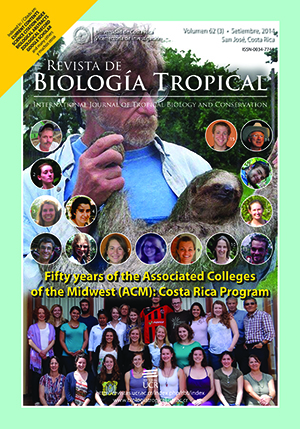Abstract
Mollusks are some of the most important, abundant and diverse organisms inhabiting not only aquatic ecosystems, but also terrestrial environments. Recently, they have been used for bioremediation of aquaculture effluents; nevertheless, for that purpose it is necessary to analyze the capacity of a particular species. In this context, an experimental investigation was developed to evaluate the performance of two bivalves C. gnidia and D. ponderosa, collected from areas with or without shrimp aquaculture effluents. For this, the filtration capacity (as clearance rate) as well as the oxygen consumption and ammonia excretion rates were measured following standard methods. The clearance rate was significantly higher for D. ponderosa from impacted areas, when compared to C. gnidia, from both areas. Contrarily, the oxygen consumption was greater for C. gnidia from impacted areas compared to D. ponderosa from both areas. The same tendency was observed for the ammonia excretion with the highest rates observed for C. gnidia from impacted areas, whereas no differences were observed among D. ponderosa from both areas. The results suggest that both species developed different strategies to thrive and survive under the impacted conditions; D. ponderosa improved its filtration efficiency, while C. gnidia modified its oxygen consumption and ammonia excretion. We concluded that both species, and particularly D. ponderosa, can be used for bioremediation purposes.##plugins.facebook.comentarios##

This work is licensed under a Creative Commons Attribution 4.0 International License.
Copyright (c) 2014 Revista de Biología Tropical
Downloads
Download data is not yet available.






